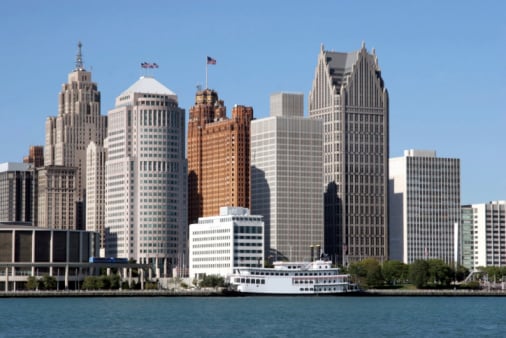The idea behind saving Detroit is that, if most of its debt and pension obligations are wiped out in bankruptcy court, the city can operate mostly unencumbered with what have been huge, obligatory outflows of cash. Unfortunately, going forward, Detroit’s tax bases and other fees it collects need to be enough to run a huge city, much of which is already in ruins and needs rebuilding. Source: Thinkstock
Source: Thinkstock
Part of emergency manager Kevyn Orr’s plan to cut debt involves disposing of a series of interest rate swaps, which might help get Detroit $350 million in financing to end those financial obligations. That money has to be repaid, a small detail that has not been mentioned much by Orr. One of the by-products of winding up the swaps is that the city would get access to $170 million in casino taxes.
That casino money will not last long as Detroit tries to find a way to repair hundreds of miles of roads, tear down or build up dozens of neighborhoods and carry the traditional financial burdens of funding police and fire departments, along with the civil servants who shuffle papers and make Detroit work day to day.
Detroit’s income and expense problems already have been analyzed by experts. Think tank Demos asked former Goldman Sachs investment banker Wallace Turbeville to have a look. Among his conclusions:
Detroit’s bankruptcy was primarily caused by a severe decline in revenue and exacerbated by complicated Wall Street deals that put its ability to pay its expenses at greater risk.
The deals might go away. The decline in revenue will not.
If anything, the revenue base, mostly taxes, has fallen rapidly and is likely to fall further. Among the most cited causes is that the city had 1.8 million residents according to the 1950 Census. That figure has dropped to 700,000. Among those people, according to the U.S. Bureau of Labor Statistics, many have no jobs. The agency reported, based on recent analysis, that 23.1% of Detroit’s working population is unemployed — the highest rate among America’s 50 largest cities. Many of the people who fled Detroit were upper and middle class, further damaging Detroit’s ability to collect revenue. Add to that the exodus of corporations, particularly car companies, and Detroit has little access to substantial tax revenue and fees in the future. What is left in terms of the city’s largest employers are primarily government entities, which include the U.S. government, nonprofits such as hospitals, and necessary city services groups, including the Detroit Public Schools. It is hardly a group that is a rich source for taxes.
Finally, there is a lot of Detroit to manage. The city takes up 3,913 square miles. Among the wild ideas to cut the need to provide services to that area are bulldozing houses to create farmland or making parts of the city into population deserts. None of the ideas to reduce the size of the areas to which the city must provide services can pass as sane.
What all of this leaves is math that can only lead to pessimism about Detroit. It is a city without the means to bring in money, while its obligations to manage it will not go away.
Sponsored: Attention Savvy Investors: Speak to 3 Financial Experts – FREE
Ever wanted an extra set of eyes on an investment you’re considering? Now you can speak with up to 3 financial experts in your area for FREE. By simply
clicking here you can begin to match with financial professionals who can help guide you through the financial decisions you’re making. And the best part? The first conversation with them is free.
Click here to match with up to 3 financial pros who would be excited to help you make financial decisions.
Thank you for reading! Have some feedback for us?
Contact the 24/7 Wall St. editorial team.



